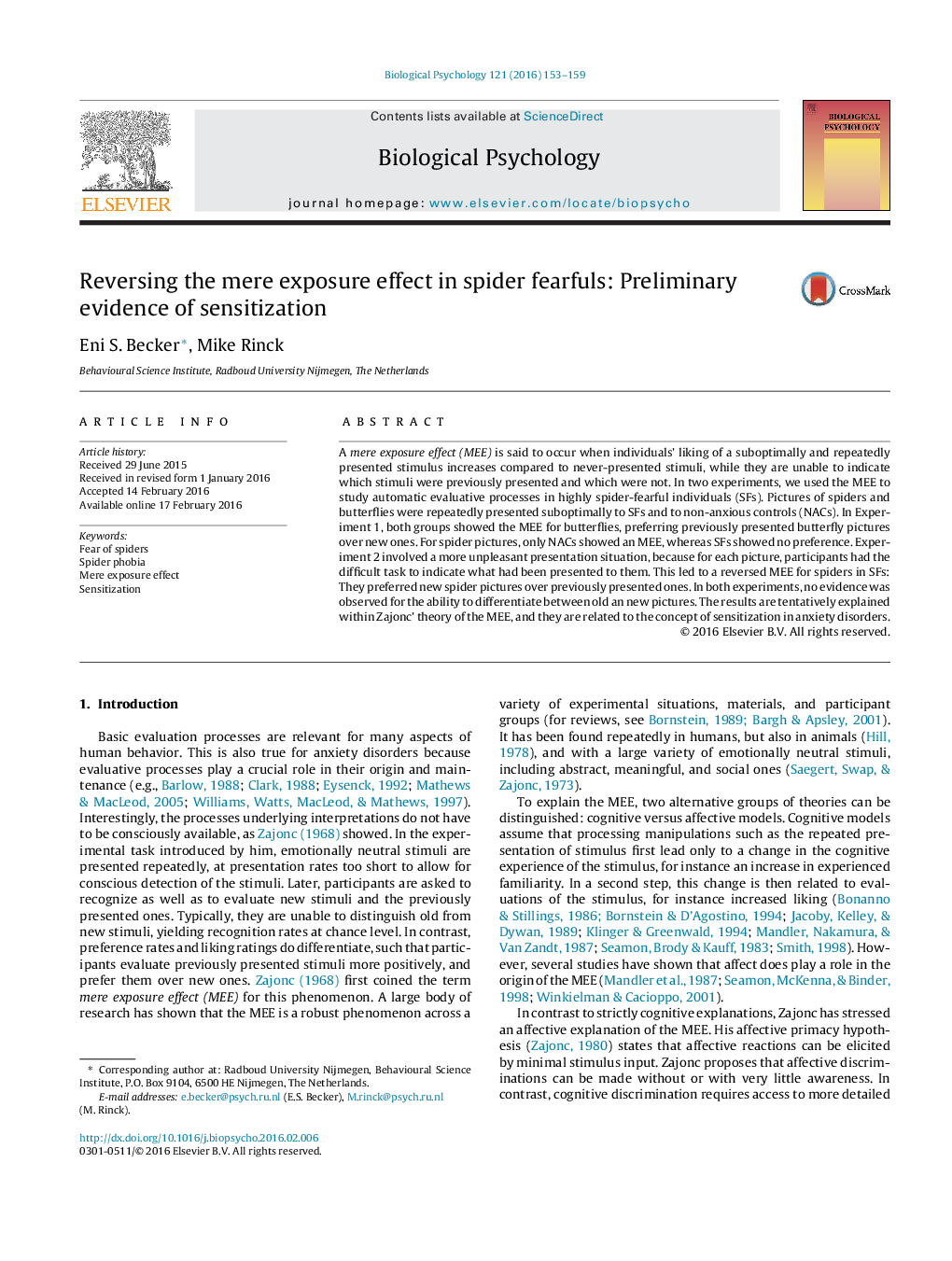| کد مقاله | کد نشریه | سال انتشار | مقاله انگلیسی | نسخه تمام متن |
|---|---|---|---|---|
| 5040561 | 1370422 | 2016 | 7 صفحه PDF | دانلود رایگان |
- This ms. reports the first instance of a reversal of the mere exposure effect: spider fearfuls preferred new spider pictures over previously presented ones.
- The reversed MEE occurred after threatening materials (spider pictures) were presented to spider fearfuls in an unpleasant detection situation.
- The paper contributes to the understanding of the mere exposure effect and of the biased cognitive processes in specific fears and phobias.
- The reversed MEE relates to the clinically relevant processes of habituation and sensitization.
A mere exposure effect (MEE) is said to occur when individuals' liking of a suboptimally and repeatedly presented stimulus increases compared to never-presented stimuli, while they are unable to indicate which stimuli were previously presented and which were not. In two experiments, we used the MEE to study automatic evaluative processes in highly spider-fearful individuals (SFs). Pictures of spiders and butterflies were repeatedly presented suboptimally to SFs and to non-anxious controls (NACs). In Experiment 1, both groups showed the MEE for butterflies, preferring previously presented butterfly pictures over new ones. For spider pictures, only NACs showed an MEE, whereas SFs showed no preference. Experiment 2 involved a more unpleasant presentation situation, because for each picture, participants had the difficult task to indicate what had been presented to them. This led to a reversed MEE for spiders in SFs: They preferred new spider pictures over previously presented ones. In both experiments, no evidence was observed for the ability to differentiate between old an new pictures. The results are tentatively explained within Zajonc' theory of the MEE, and they are related to the concept of sensitization in anxiety disorders.
Journal: Biological Psychology - Volume 121, Part B, December 2016, Pages 153-159
